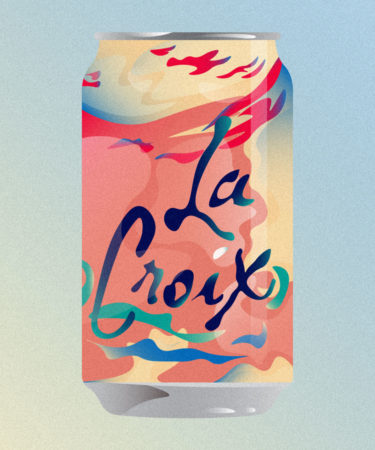Long before it was a tech startup staple, Instagram darling, or series of art exhibits, LaCroix was carbonated water. It was available in bottles in three flavors — pure, lemon, and lime — and was marketed as a diet-friendly drink. The low-calorie soda water, pronounced “la-croy,” is named for its home of La Crosse, Wis., and the St. Croix River that runs through it. And it was created by a local brewery.
G. Heileman Brewing Co., better known for making Old Style beer and Colt 45 malt liquor (now produced by Pabst), launched LaCroix in 1980. After a series of sales and ownership changes, the brewery went bankrupt in 1991. A local newspaper detailing the brewery’s intricate history explains it eventually landed in the hands of 12 investors, who continue to operate it today under the name City Brewery.
LaCroix, however, went on a journey all its own.
In 1992, WinterBrook Beverage Group, “a marketer of ‘new age’ or alternative beverages,” acquired G. Heileman’s LaCroix and Cold Spring sparkling water brands, according to a Nov. 13, 1992 article in The Chicago Tribune. The Tribune called LaCroix “a plum for WinterBrook, giving the company a highly visible and popular sparkling water in the Midwest.” Sadly, the sparkling success didn’t pan out. WinterBrook went bankrupt in 1996, and in swooped LaCroix’s next buyer, National Beverage Corp.
LaCroix’s unprecedented success in the early 2000s is largely credited to National Beverage Corp. CEO Nick Caporella, the now-83-year-old billionaire who reportedly committed himself fiercely to the brand (at times, to a serious fault; more on that later). Sources say LaCroix was Caporella’s “baby,” and that he felt he and the company were “reborn” after acquiring the bubbly brand. His feverish devotion, along with LaCroix’s new consumer-approved (and designer-averse) packaging, an expanding spectrum of brightly labeled flavors, and increased distribution in aluminum cans, led to “double-digit volume gains” by 2013, Bloomberg reports.
Then came the seemingly endless parade of media coverage, from The New York Times’s 2015 “Letter of Recommendation” for LaCroix, to a mix of conflicting histories, listicles, and odes to the seltzer. But like the bubbles it sells, LaCroix couldn’t stay on top forever.
In 2016, National Beverage senior executives began leaving the company in what trade publication BevNet called a “National Exodus.” Over the next three years, former colleagues, employees, shareholders, and consumers sued Caporella and National Beverage for “improper touching,” hostile work environment, wrongful termination, and misleading claims regarding LaCroix’s “all-natural” recipe. The most recent lawsuit alleges LaCroix lied about its rollout of BPA-free cans. Sales and shares of LaCroix have started to sink.
Meanwhile, competitors like Coca-Cola’s sparkling Dasani and Smartwater, PepsiCo.’s Bubly, Northeast seltzer stalwart Polar, and boutique brand Spindrift are on the rise. (Incidentally, two National Beverage executives left the company for Spindrift.)
Caporella remains undeterred. In media statements written in an alarmingly similar fashion to Trump tweets, Caporella blames LaCroix’s decline on “injustice!,” asserting his company “is and will remain the preeminent innovator that adds zest and authenticity to the ‘sparkling water’ phenomenon in North America.”
Concluding a 2019 press release, Caporella writes, “Just ask any LaCroix consumer… Would you trade away that LaLa feeling? ‘No way,’ they shout — We just love our LaCroix!’”
